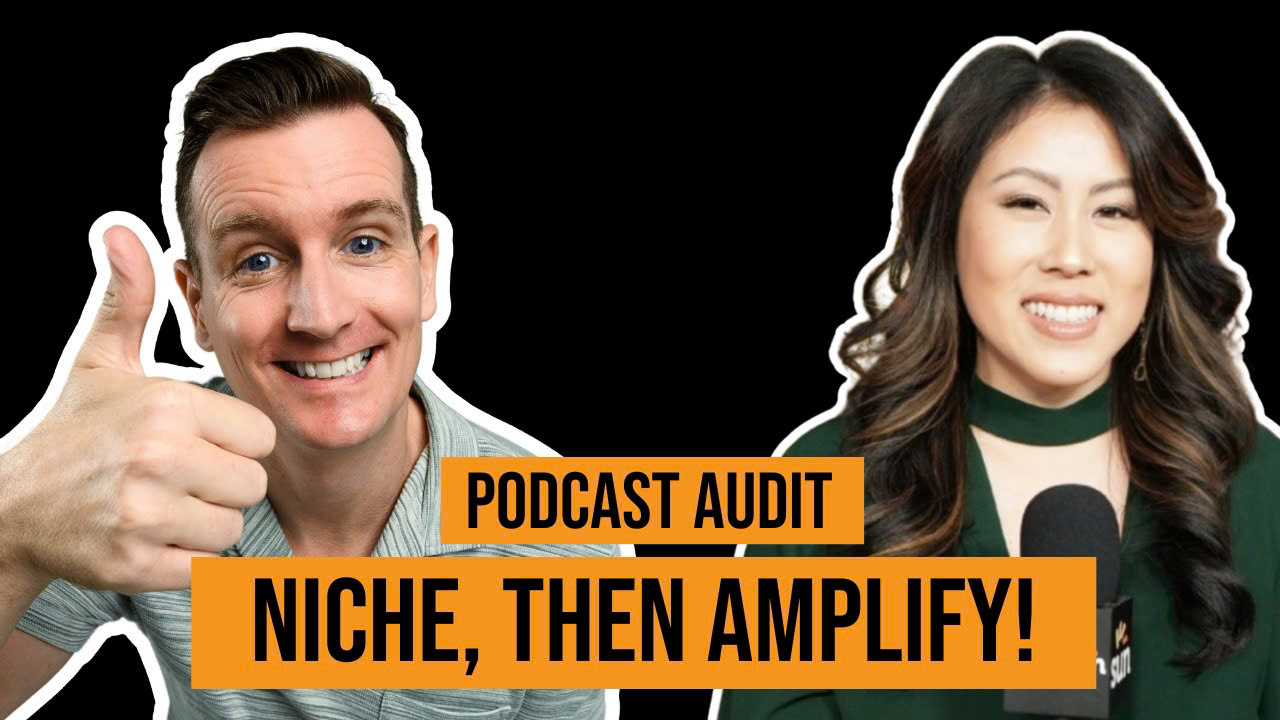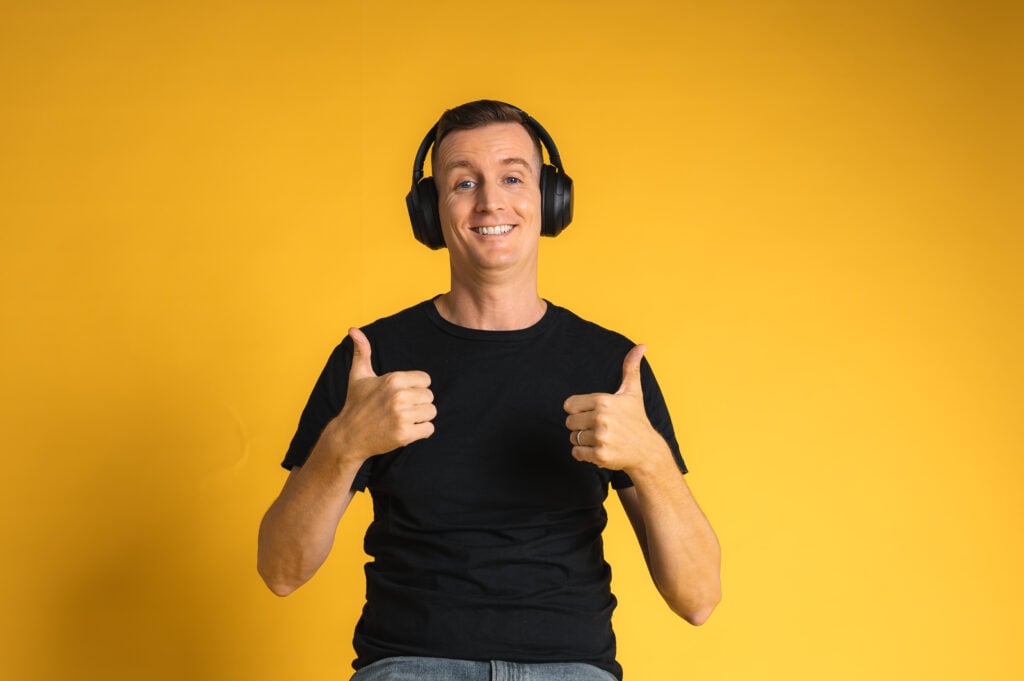My name is Niall Mackay, The Podcast Guy. Along with running Seven Million Bikes Podcasts, I am the host of this show to share my experience and expert tips to others about podcasting.
This time, I do a podcast audit for Nicki Sun, who is incredibly talented, with a strong background in video and storytelling.
I gave her some advice and tips on improving her podcast niche, structure as well as the secret to capturing the audience’s attention.
Choosing a Podcast Niche – Choosing one Focus
One thing I’ve learned over the years is that choosing a niche is one of the most important parts of podcasting. It’s the thing that helps you attract the right audience. And when you’re speaking directly to the right people, that’s what leads to growth, loyalty, and even sales—whether that’s coaching, services, courses, or partnerships.
The good news is, your niche doesn’t have to be complicated. It just needs to be clear.
But here’s the reality—not every podcast nails this. And that includes really great shows.
Even in Nicki’s case, she told me that she wanted her show to focus on “world creators,” not just one group or region. She also hoped to deliver a mix of entertainment, inspiration, and education. That’s a strong mission, but it’s still quite broad.
She described her podcast as “cinematic,” but also spoke about her “listeners.” Those are two very different audiences. This highlighted a common challenge in podcasting today: trying to serve both YouTube and traditional podcast platforms in the same way.
Clear Strategies for Video and Audio
I do believe podcasts and YouTube shows can coexist, but you need to be clear about how you’re showing up on each platform. If your YouTube show is cinematic and visual, that’s great. But your audio version needs to work as a standalone experience too. Otherwise, you risk confusing or losing your podcast audience.
Nicki’s YouTube channel is well-developed, with over 20,000 subscribers. Her content there is highly produced and visually engaging. But when I looked at her podcast on Apple and Spotify, I noticed the episodes and formatting were quite different. That kind of mismatch can confuse your audience and hold back growth, especially on audio platforms where expectations are different.
I explained that if her main focus is cinematic storytelling for YouTube, that’s a valid direction, and she should lean into it. But if she also wants to grow her podcast audience on platforms like Spotify and Apple Podcasts, she’ll need to adapt her content and structure accordingly.
Why Consistency Still Wins
When I checked her podcast feed, I noticed the latest episode was from October 2024. At the time of our call, it was May 2025. That meant her show had been on an eight-month break.
Nicki laughed and said, “Well, I was planning my wedding!” And honestly, fair enough. Life happens. But even before that, she had only published 11 episodes in one year. That’s less than one per month.
We’d talked about this before the audit started. And I told her what I tell every podcaster: consistency beats everything.
It doesn’t matter how amazing your content is if you’re not publishing regularly. New listeners won’t stick around. Algorithms won’t surface your show. And even your most loyal fans might forget about it.
That doesn’t mean you need to publish every day. But you do need a plan. Weekly or biweekly is ideal. And if your schedule doesn’t allow for that, you can batch your recordings, simplify your editing, or take a seasonal approach where you drop a group of episodes at once.
Because if you’re not showing up consistently, it’s almost impossible to grow.
Podcast name, artworks and show notes: Small Details, Big Impact
There were a few things I loved about Nicki’s podcast right away.
Artwork
First was the artwork—clean, professional, and easy to read. That might sound basic, but it’s surprising how many podcasters get it wrong. Some cram in too many words, use tiny fonts, or make design choices that just don’t work on a small phone screen. As a visual creator, Nicki clearly understands good design, and it shows.
Title
Her podcast name, The Nicki Sun Show, also worked well. I thought about whether having “The” at the beginning was a problem, because in podcast SEO, every word counts. For example, I dropped “A” from my own show, A Vietnam Podcast, so it would show up faster when people searched “Vietnam.” But in Nicki’s case, I realized it wasn’t a big issue. After all, The Diary of a CEO and The Joe Rogan Experience are two of the biggest shows in the world—and they’ve kept the “The.”
What I did suggest, though, was adding a tagline.
This is a small but powerful trick that can help your podcast stand out. You don’t have to change your name or artwork—just add a short phrase that explains what your show is about. This way, when someone scrolls through Spotify or Apple Podcasts, they immediately know what to expect.
Show Note
Her show notes were solid too—but there was one simple tweak I recommended: write them in the first person.
Why? Because your show is about connection. Writing in the first person helps the listener feel like you’re speaking to them, not just about the guest. It creates a stronger emotional link—and that matters when someone is deciding whether or not to press play.
We made this change on my own podcast about six months ago, and it’s made a huge difference.
Another suggestion was not to fully rely on AI. If you don’t give it the right prompts, you end up with the same generic intro every time—like the dreaded:
“In this episode…”
I see that everywhere. So I told my team: we can never start a show note with that line again. It’s vague, overused, and adds no value.
Instead, I encouraged Nicki to start every show note with a powerful quote from the episode. Something intriguing, surprising, or emotional. That quote becomes the hook, especially important because most podcast apps only show the first line of the description when people are scrolling. You’ve got one chance to catch their attention.
Podcast Video: A 30-Second Hook Can Make A Difference
When I watched Nicki’s episode with George Shaw, the intro started with 20 seconds of music—no speaking, no visual hook, just music and visuals. And while the music was beautiful (composed by George himself), I knew right away that it wasn’t helping retain her audience.
When it comes to podcasting and video content, one of the biggest lessons I’ve learned—especially from YouTube—is how critical the first 30 seconds really are.
I’m not a YouTube expert, but even YouTube itself tells creators that 50% of viewers drop off within the first 30 seconds. That’s a huge number. And if you can keep just half of your viewers watching beyond that point, you’re already doing better than most.
In fact, YouTube uses this stat to help determine how your video performs in its algorithm. If more than 50% of viewers stick around, YouTube is more likely to push it out to others.
Now compare that with podcasting. On average, about 80% of podcast listeners stay until the end of an episode. That’s a huge difference. It means podcast listeners are more committed, but it also means your intro matters differently depending on the platform.
Podcast Intro and Outro
There are a couple of often-overlooked elements that can make a big difference in your podcast: the intro and the outro. Here are some tips that I took from auditing Nicki’s show.
Podcast Intro For Video and Audio
After talking about the hook, we got into an important discussion: Should you create separate edits for YouTube and for podcast platforms?
My answer: Not necessarily. But you should be strategic with your intro.
So to demonstrate this, I surprised Nicki by re-editing the opening of her George Shaw episode. I took three strong quotes from George and used them to build a 30-second highlight reel right at the start. I added subtitles, since many people scroll YouTube with the sound off, and a waveform animation to catch the eye.
This is what I do for every episode of Smarter Podcasting and for client shows too. The first 30 seconds are designed to grab attention fast, both visually and emotionally. If someone’s on the fence, a powerful hook can be the difference between clicking away—or sticking around for the full story.
Even if you’re repurposing the same content for both YouTube and Spotify, tailoring that first 30 seconds for each platform can change your results.
Speak to One Person, Not a Crowd
Another small but meaningful tip I gave Nicki was to speak to one listener, not a group. She opened her show with “Hello, Sunshines,” which is a lovely idea. Giving your audience a name creates a sense of community.
But one thing I learned from podcast consultant Mark Steadman was this: 99% of people are listening alone. They’re walking the dog, doing dishes, or commuting. They’re not in a group. So when you say “Hello, Sunshine” instead of “Sunshines,” you build a one-on-one connection.
It’s a subtle shift, but podcasting is an intimate medium, and small changes can make a big difference in how your listener feels.
Small Fixes That Create a Big Impact
I also encouraged Nicki to rethink some common habits:
- Saying “Welcome back” can alienate new listeners. Just say “Welcome”—not everyone has heard your show before.
- Start every episode with a clear structure:
- Welcome + your name
- Who you are and why you’re the guide
- What the show is about
- What value will this episode give
- Introduce the guest (3 quick bullet points + name)
End with a CTA—Not Silence
At the end of the episode, there was no strong call to action (CTA). Nicki gave the closing moment to the guest—“Tell people where they can find you”—which is fine, but it misses a big opportunity.
You’ve put time, money, and energy into making this podcast. Your audience should know what to do next.
Whether it’s:
- Visit your website
- Subscribe to your email list
- Hire you
- Follow your show
Make the last thing they hear a reason to come back to you. You don’t need to push every platform—just one clear CTA is enough.
And finally, please don’t end with 90 seconds of music. Most listeners won’t sit through it, and YouTube’s algorithm will notice. The faster people leave, the lower your engagement score.
Conclusion
Nicki’s show is already strong. She’s a talented host, a skilled editor, and a passionate storyteller. But like so many podcasters, especially those coming from a video-first background, she just needed a clearer path.
If you’re having a podcast and need some advice for your show, don’t hesitate to contact me.


